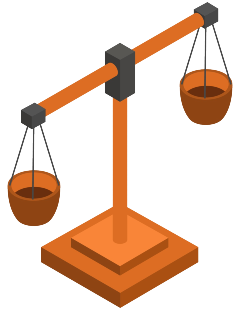How to Add a Doe Defendant to a Complaint
What is a Doe Defendant?
In California, if you are ignorant of the name or identity of a defendant, you may still name that defendant in your complaint by naming him as a “Doe” (as in John Doe).
This is allowed by Code of Civil Procedure 474. [CCP 474].
This is why the caption in many legal Complaints filed in California read like this:
Henry Hurt,
Plaintiff.
vs.
Theresa Tortfeasor and DOES 1 to 50,
Defendants.
This can be a very useful tool. For example, even in a rear-end car crash case where the injured person knows the name of the driver, it is often prudent to add some DOE defendants. If it is later discovered that the defendant was driving another person’s car at the time of the car accident, the plaintiff can amend the complaint to replace DOE 1 with the name of the car’s owner.
Through this legal fiction, the car owner has been a party to the case from the beginning, only no one knew his name.
There are of course many complexities involved with adding DOE defendants, and a lawyer should always be consulted before attempting it.
What Do You Do After You Have Discovered The True Identity of a Doe Defendant?
The Complaint Must Be Amended – After the true identity of a “Doe” Defendant has been discovered, the complaint “must be amended accordingly” [CCP 474].
Plaintiff Gets One “Free” Amendment Early On – Before an answer has been filed, or before a demurrer has been heard, the plaintiff may amend the complaint once without permission from the court. [CCP 472]. The amended complaint must be served on the opposing party, and the time to respond will be based on the amendment, not on the original complaint.
After Answer or Demurrer, Plaintiff Must Seek Leave of Court to Amend – Most counties have simple forms that allow amendments of Doe defendant’s. Sacramento Superior Court’s Form can be found HERE. The court usually grants these “ex parte” – the form is simply filed with the court without notice to the opposing party, and the judge signs and returns it.
Once The Complaint Has Been Amended, Defendant Must Be Served – The newly added defendant must be served like any other defendant. It is probably a good idea to serve the defendant with both the summons, the complaint, and the amendment to the complaint, although it is not technically necessary to serve the defendant with the amendment, as long as the Proof of Service is filled out in such a way as to indicate that the defendant is being served as a DOE defendant:
(“2. NOTICE TO THE PERSON SERVED: You are served […]
b.
as the person sued under the fictitious name of_______ .”
No Amended Summons Is Needed For DOE Defendants – Normally when a party is added, an amended summons is required. However, a DOE defendant may be served with the original summons. [CCP 412.10; Gillette v. Burbank Comm. Hosp. (1976) 56 Cal.App.3d 430, 433–434].
Can You Add a Doe Defendant After The Statute of Limitations Has Run?
- You May Serve a DOE after the Statute Has Run If:
- The original complaint named “Doe” defendants and stated a valid cause of action against them; and
- The amended complaint is based on the same general set of facts; and
- Plaintiff was genuinely ignorant of the defendant’s identity or liability at the time the original action was filed. [CCP 474; Austin v. Mass. Bonding & Ins. Co. (1961) 56 Cal.2d 596].
This page is not legal advice, and there is no guarantee that this information is up to date. If you need legal advice, you should contact a lawyer.
This page was created by and (c) Noah Schwinghamer, a Sacramento Injury Lawyer. If you would like to copy this information, please request permission. Please feel free to link to this page.

 as the person sued under the fictitious name of_______ .”
as the person sued under the fictitious name of_______ .”